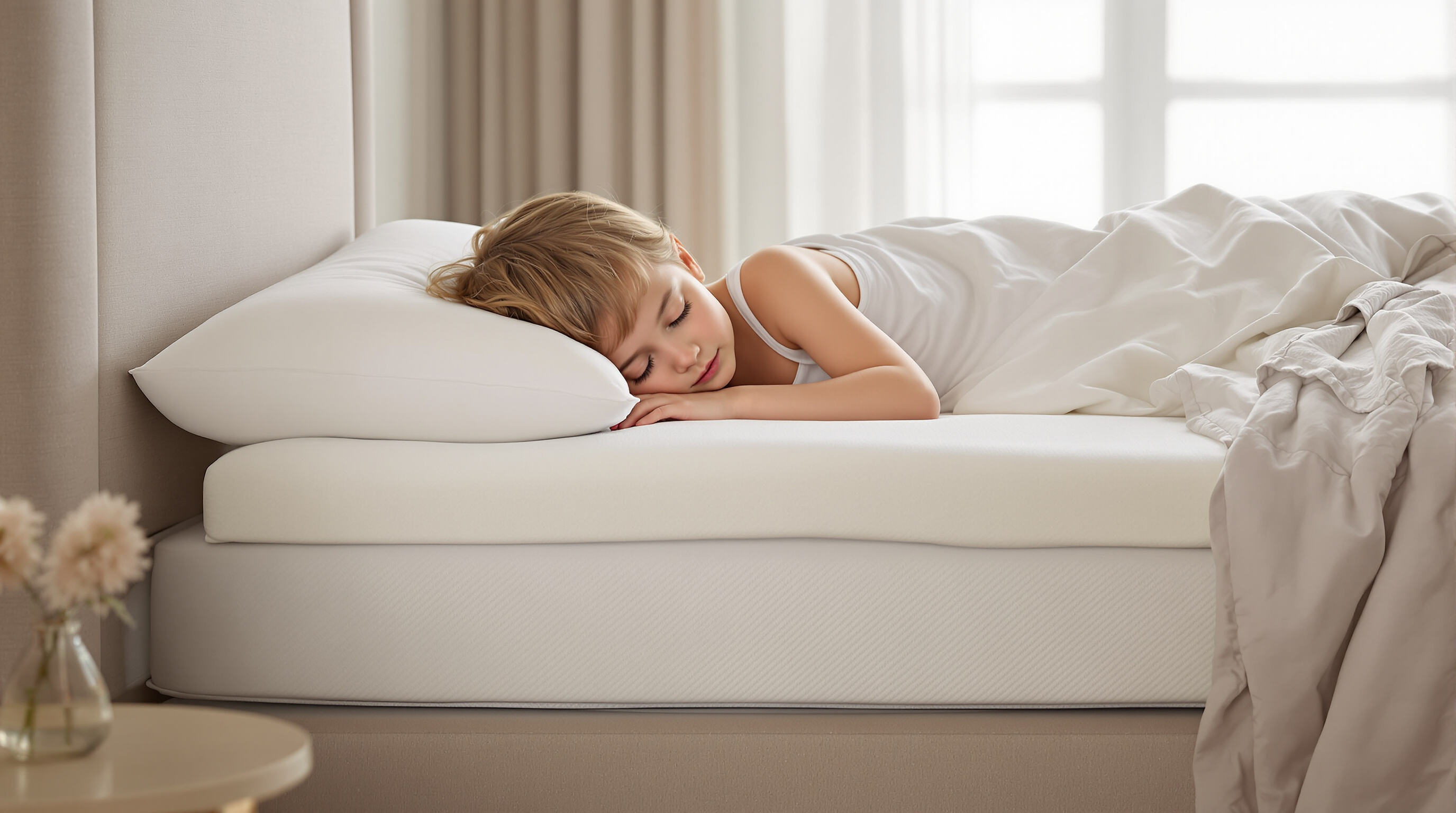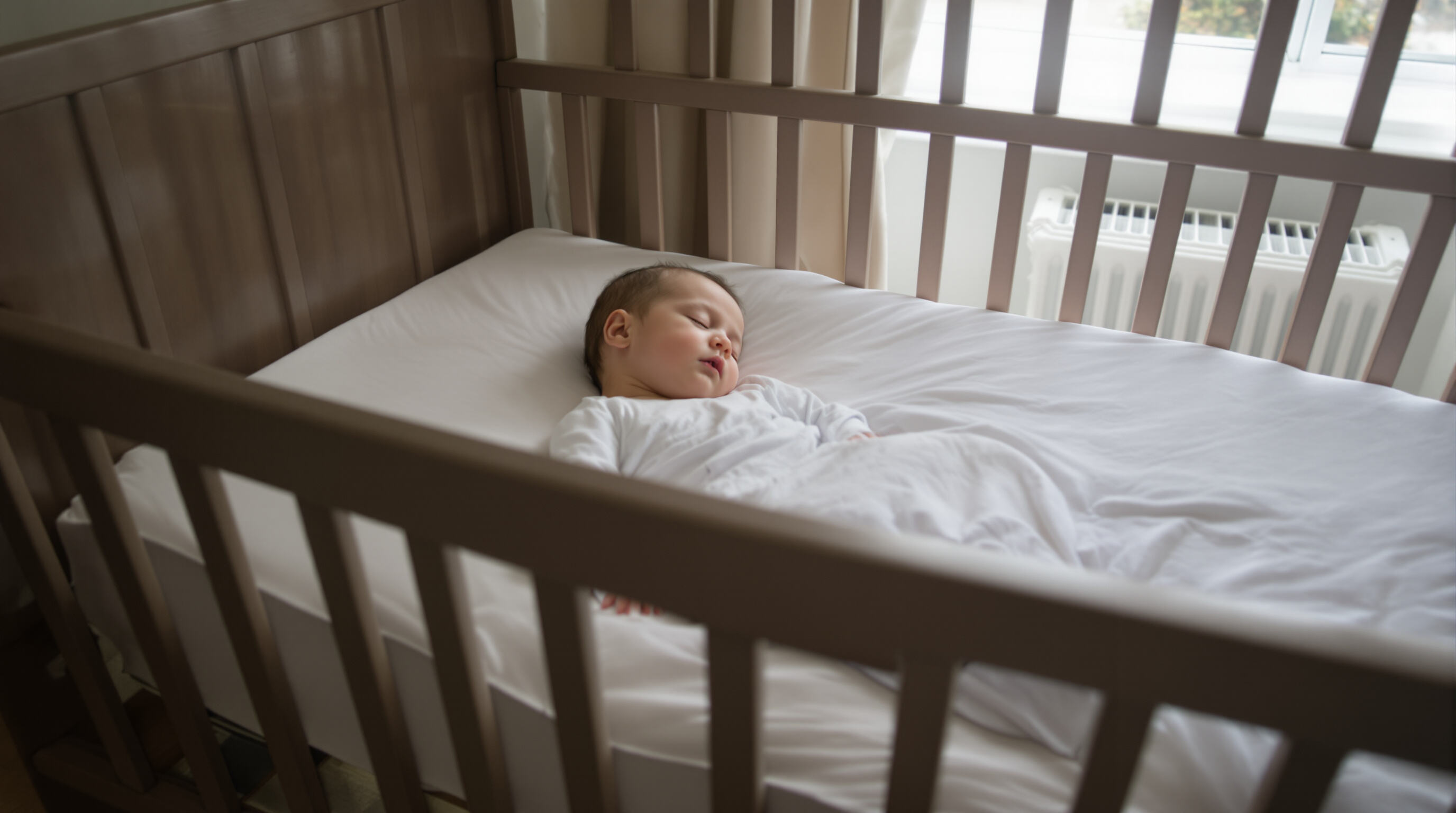Kids tend to react to allergens about 40 percent more than grownups do, which is why getting good quality hypoallergenic bedding really matters when it comes to cutting down on those annoying nighttime sneezes, itchy skin problems, and all that stuff that irritates their breathing. Dust mites, which are actually one of the main things that set off childhood asthma episodes, love hanging out in fabrics that don't breathe well. The good news though? Materials that are specially made to be hypoallergenic, especially ones with tight weaves like organic cotton, basically form a protective shield against these little troublemakers.
For skin-friendly baby bed linen, prioritize fabrics with natural temperature regulation and moisture-wicking properties. Bamboo viscose resists dust mites and bacteria growth, while OEKO-TEX-certified microfiber prevents chemical exposure. Organic cotton remains the gold standard for newborns, with its breathable weave reducing overheating risks by 30% compared to synthetic blends.
Look for three key safety benchmarks:
About three quarters of parents think natural bedding equals safe bedding, but what they don't realize is that untreated wool and latex products can actually cause allergies. Research from the Pediatric Allergy Journal last year showed something surprising too many people overlook these days. Natural hemp bedding led to skin rashes in around one out of every eight toddlers tested. That's why looking at actual certifications matters way more than just reading marketing labels. And let's not forget about regular cotton either. Cotton that isn't organic often still has traces of pesticides left behind from farming processes. So when shopping for baby bedding, it turns out how the materials were processed matters almost as much as where they came from originally.
A 2023 study on kids found that around 40 percent of those under five deal with some kind of skin sensitivity, which really highlights how important fabric choices are for little ones. Bedding materials that are gentle on skin help cut down on friction and irritation because they steer clear of those synthetic dyes and strong chemicals we all know about. Newborn babies have skin that's actually about 30% thinner compared to grownups, so breathable stuff matters even more. Organic cotton works great here since it lets air circulate properly and pulls away moisture from the body. This helps keep those pesky heat rashes at bay and stops eczema from getting worse when it flares up.
Breathability directly impacts comfort and safety:
Avoid polyester blends, which trap heat and increase sweating.
For those with sensitive skin, organic cotton still stands out as the best bet because it's just so soft and hasn't been treated with chemicals. Parents often turn to bamboo fabric when their little ones have allergies since it naturally fights bacteria. Microfiber works well enough for bigger kids too, provided they get the kind that's actually free from harmful substances. When shopping for baby clothes specifically, look for OEKO-TEX Class I certified materials. This label basically means the fabric has passed rigorous tests to prove it won't irritate tiny skin, giving parents peace of mind about what touches their child all day long.

Kids growing fast need beds that offer just the right amount of give to keep their backs straight and help them get good rest at night. Research into child development reveals something important: when kids sleep on really soft mattresses, their spines can actually shift out of alignment by around 15 to 30 percent during those crucial growing years according to Sleep Health Foundation findings from last year. Medium firmness seems to work best because it supports the body's natural curves all the way from head down to tailbone. Parents notice this makes a real difference too since kids toss and turn about 40 percent less than they do on super soft mats. Getting proper support while sleeping isn't just about comfort either. It plays a big role in how posture develops over time and affects how long children stay in deep sleep stages that are so important for brain development and learning.
Good bedding works as a system really. Mattresses need to stop people from sinking into their hips and shoulders, while pillows keep the neck in a natural position. Little kids around preschool age usually do best with pillows about 2 to 3 inches thick filled with something springy like latex or buckwheat. These give proper support for growing spines without lifting them too high. Combine this with soft breathable sheets made from organic cotton covers helps babies stay cool through the night, which is important for good spine rest. Doctors who specialize in bones have found that old mattresses passed down from older siblings can be risky business. Kids who sleep on these tend to develop alignment problems at about 2.4 times the normal rate because the mattress isn't firm enough for their developing bodies.
When it comes to kids' bedrooms, going with bedding that can handle regular washing makes all the difference when dealing with those inevitable allergy flare ups and juice spills. Materials such as microfiber or cotton blended with polyester tend to last through at least 50 washes per week without any noticeable shrinkage or wear down according to research from Textile Durability Institute back in 2023. Parents should look out for beds with zipped up pillow cases and separate comforter systems because these designs make laundry day much easier. Studies show these washable setups cut down on dust mites by about two thirds compared to what happens with stuff that cant be washed normally, says Pediatric Sleep Council in their 2024 report. And really, nobody wants to deal with fabrics that require dry cleaning since chemicals left behind after treatment can bother little ones with sensitive skin.
Go for colors and designs that won't fade easily, paired with fabrics such as microfiber that still look good after washing. Waterproof mattress protectors are a must have these days, especially ones that can handle hot washes around 60 degrees Celsius or 140 Fahrenheit. They form the first line of defense when accidents happen. Layered bedding systems work wonders too. Just wash the outer cover instead of taking apart the whole comforter each time. Some recent research from last year suggests this method cuts down on laundry time by about forty percent. Make sure everything fits in regular home washing machines to save money on professional cleaning services. When it comes to baby bedding specifically, look for materials that naturally resist stains while staying soft even after multiple washes in the machine. High quality microfiber tends to do this well without losing its gentle feel against delicate skin.

Tragically, many infant sleep accidents could be avoided if parents knew what to look out for. About two thirds of all suffocation incidents in nurseries happen because of loose bedding materials. Think about it: when babies start rolling over around 3-4 months old, those fluffy pillows, heavy comforters, and cute stuffed toys become real dangers as they can block little ones' airways. Research shows that using soft mattress pads actually makes rebreathing problems five times worse than with firm surfaces. The American Academy of Pediatrics recommends keeping cribs completely empty except for a tight fitting sheet. No bumpers, no positioners, definitely skip the weighted blankets. And just recently, the Consumer Product Safety Commission put new limits on quilted mattress covers after finding they pose serious entrapment risks for infants.
Transform cribs into safe zones using these essential protocols:
Place cribs away from window cords and heaters while maintaining supervised tummy time sessions. Bassinettes require rigid-side construction with certified air-permeable mesh.
Pediatric experts across the board recommend temperature controlled bedding systems to keep babies safe during sleep. The risk of overheating is actually connected to SIDS, which is why many doctors suggest keeping nursery temperatures around 68 to 72 degrees Fahrenheit. Instead of piling on blankets, parents should go for wearable options that stay put. Recent studies looking at flame retardants in those soft foam mattress pads have led some parents to opt for baby bedding that carries the Oeko-Tex STANDARD 100 certification as an extra precaution. Cleaning up the sleep area makes sense too since clutter tends to trap dust mites and other allergens. One study showed about a 40% reduction in allergen levels when spaces were properly organized, plus it just feels better knowing what's going on in there.
Key certifications include GOTS (Global Organic Textile Standard), Oeko-Tex Standard 100, Class I, and Greenguard Gold. These certifications ensure that the bedding materials are free from harmful substances and that they adhere to ethical manufacturing practices.
Not necessarily. While many parents assume that natural bedding is safe, untreated wool and latex can cause allergic reactions. It's important to look for textiles with certifications rather than relying on marketing labels alone.
Organic cotton is highly recommended for sensitive skin due to its hypoallergenic properties and breathability. Bamboo fabric is also a good choice as it fights bacteria naturally. Always opt for OEKO-TEX Class I certified materials.
Bedding should be replaced every 24 months, as mattress cores can lose up to 50% of their support density over time, affecting spinal alignment and sleep quality.
 Hot News
Hot News2025-09-04
2025-09-02
2025-09-01
2025-07-08
2025-06-10
2025-11-27